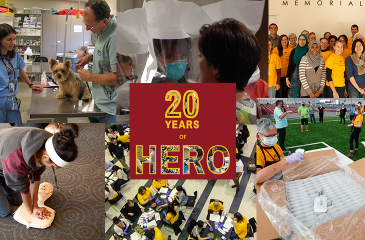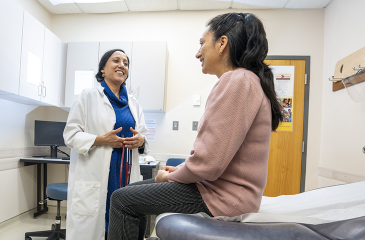With the news of a COVID-19 outbreak in India and the World Health Organization urging countries to address global inequalities in health, University of Minnesota faculty Shailey Prasad and Karthik Natarajan speak about global distribution and supply chain challenges and inequity around pandemic resources.
Shailey Prasad
“What we are seeing unfolding in India is a catastrophic ‘perfect storm.’ It was a powder keg created by long-term poor investment in the health sector, a vastly underfunded public health infrastructure, complacency and possibly some fatigue about the pandemic, and large gatherings like the Kumbh Mela — with an estimated 5 million pilgrims a day, and perhaps upto 100 million people gathering over the entire period of the celebrations.
“Having worked in the healthcare sector in India and with continued partnerships in India, I can understand the challenges in getting COVID-19-affected people adequate care. I feel for the frontline healthcare workers who are facing unprecedented numbers of patients, poor supplies, compounded by inadequate healthcare infrastructure. And, as in many other places in the world, misinformation regarding medications and treatment is rampant.
“There is an acute need for an appropriate triaging mechanism so that patients are treated in appropriate places — the milder ones that are taken care at home, the sicker ones in hospitals. With a severe shortage of hospital beds there is a need to create temporary hospitals, which will be a significant undertaking with the Indian Monsoons just around the corner. The other major issue is one of logistical coordination of medication, oxygen and PPE supply across a large, diverse country.
“I do hope that the loss of life doesn’t continue as it has been in the last few days. My concern is also about other illnesses and public health issues that are either forgotten or set aside due to this second surge of COVID19 cases. For example — India has the largest number of Tuberculosis cases. Many of these are multi-drug resistant ones. I am concerned about the rapid spread of these and other diseases . And, as we stand in solidarity with India we need to continuously remind ourselves that this is not an issue that will remain in India. This, and the other illnesses that need to be addressed need continued engagement of the global community.”
Contact:
Shailey Prasad
Executive Director in the Center for Global Health and Social Responsibility
Professor at the Medical School
[email protected]
Twitter @shaileyprasad
High-resolution of Shailey Prasad here.
Karthik Natarajan
“The second wave of the COVID-19 pandemic in India has put tremendous strain on the country’s healthcare system and created substantial supply chain challenges to meet the growing need for a range of medical supplies including oxygen tanks, oxygen concentrators, pharmaceuticals, and PPEs. There is a massive effort underway, both domestically and on a global level, to source the necessary medical supplies. The U.S. Government and several U.S. companies have pledged support for this effort and so have many other national governments. However, coordinating such a large-scale sourcing effort presents unique challenges to the different stakeholders including the Indian national and state governments, non-profit organizations on the ground, and healthcare institutions. In addition to procurement, another critical challenge is managing the logistics surrounding the different medical supplies. The Indian healthcare system is highly fragmented with a mix of government and private hospitals, making it difficult to obtain a unified view of the system-wide needs. This makes logistics coordination especially challenging, resulting in situations where critical medical supplies are not available when and where they are needed.
“Beyond the impact on the healthcare system in India, the second wave also has significant ramifications for the global evolution of the pandemic. India is the largest manufacturer of vaccines in the world and is a major supplier to COVAX, a multi-stakeholder initiative that is working towards global equitable access to COVID-19 vaccines. The second wave in India has led to increased pressure on the domestic manufacturers to deliver vaccines at an accelerated pace and this, in turn, could impact the export volumes, at least in the short run. This has substantive implications for countries that depend on these vaccines to inoculate their populations and also the global trajectory of the pandemic.
“Finally, the renewed lockdowns and restrictions in several parts of India have negative externalities for a number of other health conditions. For example, during the first wave in India, there were interruptions to vaccination campaigns, access to testing for HIV and TB were hindered, and the economic fallout from the lockdown also led to an increase in malnutrition in children. The second wave could also create similar negative externalities and it is important to carefully monitor and provide the necessary support for programs focused on other health conditions so that decades of hard-won progress for those conditions are not lost.”
Contact:
Karthik Natarajan
Assistant Professor, Supply Chain and Operations
Carlson School of Management
[email protected]
High-resolution of Karthik Natarajan here.
This story was originally published as an Expert Alert by the University of Minnesota on May 3, 2021



